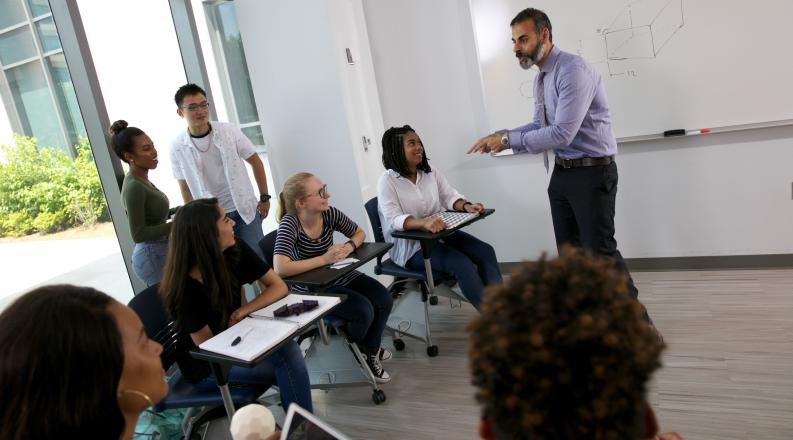By Kristal Kinloch-Taylor
Classroom observations are an emerging opportunity for faculty to receive constructive feedback and insights into their current teaching practices. With the spring semester a few months away, faculty can partner with the Center for Faculty Development (CFD) to facilitate the classroom observation process. Through a systematic approach, ODU faculty will receive support, guidance, and research-based practices to improve teaching strategies. Consultations and observations are designed to help faculty become more reflective and skilled professionals. Experts and researchers in their respective disciplines, some faculty “have not even had this experience of observation” (Cosh, 1998, p. 172). According to a recent Chronicle of Higher Education article, “high-quality teaching is fundamental to student success” (Mcurtrie, 2023), yet few faculty participate in peer review or other forms of teaching observation.2023). The CFD is committed to a confidential, and efficient process to assist with a new semester on the horizon.
The CFD’s classroom observation approach is a three-step process that begins with a faculty self-assessment/reflection, observation, and concludes with the post-observation and reflection. There is a short process that involves one classroom observation and a longer version that could involve multiple observations. Faculty self-reflection is an “intra-personal process, which encourages awareness and experiment” and important in short and long-term observations (Cosh, 173). Through self-reflection, faculty examine their instructional planning, learning environment, delivery and organization, facilitation of knowledge and skill transfer, and student learning. Course design and alignment are the center of the reflection process. Faculty are given the opportunity to re-examine their current syllabus items and determine if improvements are necessary. A well-designed course with learning objectives that align with the material enhances the student learning experience (Yale University, n,d). Once the reflection process is complete, faculty share their responses with the Center for Faculty Development Educational Program Developer or other designated observer. The reflection meeting provides faculty with a safe space to process and analyze their current teaching methods.
For in-person classes, the Educational Program Developer uses the same criteria to conduct the observation. Effective teaching strategies guide the observation process. Research shows that exemplary faculty are “organized, plan their lesson carefully, set ambitious goals, and have high expectations for their students” (Hativa et al., 2001). Well-structured and organized classes improve student success and enhance the learning experience). Through self-reflection/assessment, faculty identify areas for potential improvement and learning strategies that work well. The observation process provides a pathway to help faculty incorporate both small and/or big changes to their teaching approaches.
The post-observation conference and self-reflection conclude the observation process. Rest assured that confidentiality is key to what the CFD offers. CFD staff and those asking to be observed must agree to not disclose anything about the process or documents generated unless the faculty member being observed asks for such disclosure. Upon request, the CFD can provide faculty with a letter of support that demonstrates their commitment to teaching and faculty development. Directly aligned with ODU’s 2023-2028 Strategic Plan, the CFD will continue to provide “support opportunities to all faculty, especially those from underrepresented groups.” Classroom consultations are available for all teaching faculty, inclusive of graduate student teaching student teaching assistants, adjuncts, lecturers, tenure-track, and tenured faculty. Interested faculty are encouraged to contact the Center for Faculty Development at cfd@odu.edu. Additional details on the classroom observation process are available on the CFD website. We look forward to working with you.
References
Cosh, J. (1998). Peer Observation in Higher Education -- A Reflective Approach. Innovations in Education and Training International, 35(2), 171-176.
Hativa, N., Barak, R., & Simhi, E. (2001). Exemplary University Teachers: Knowledge and Beliefs Regarding Effective Teaching Dimensions and Strategies. The Journal of Higher Education, 72(6), 699–729. https://doi.org/10.2307/2672900
McMurtrie, B. (2023, September 20). Americans value good teaching. Do colleges? The evidence doesn’t look good. The Chronicle of Higher Education. https://www.chronicle.com/article/americans-value-good-teaching-do-colleges
Yale University. Organizing classes to facilitate student learning. https://poorvucenter.yale.edu/OrganizingYourCourse



